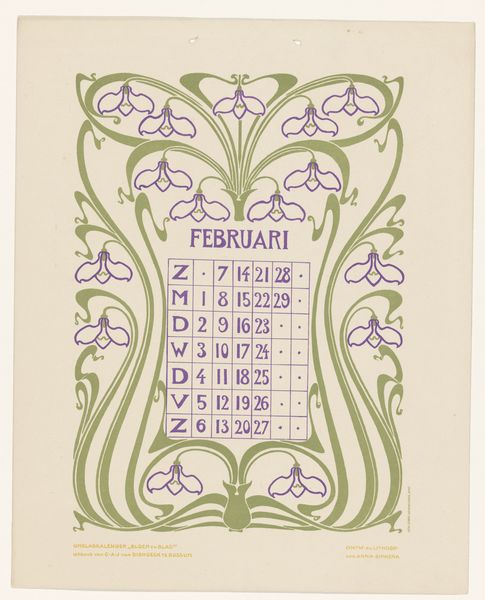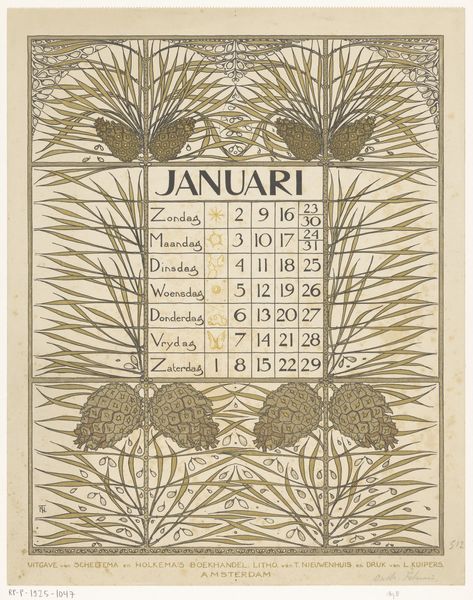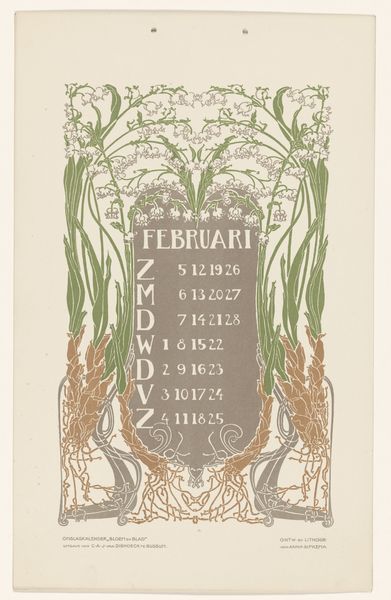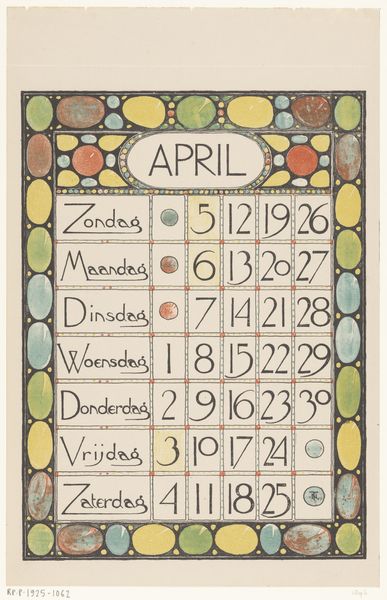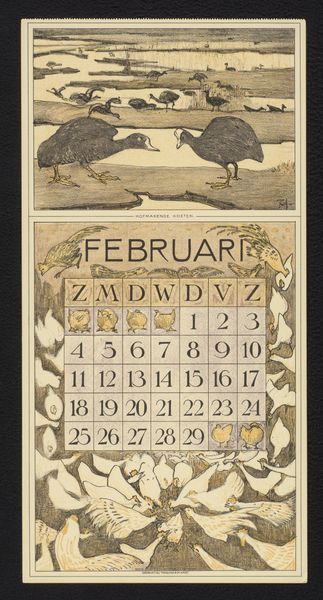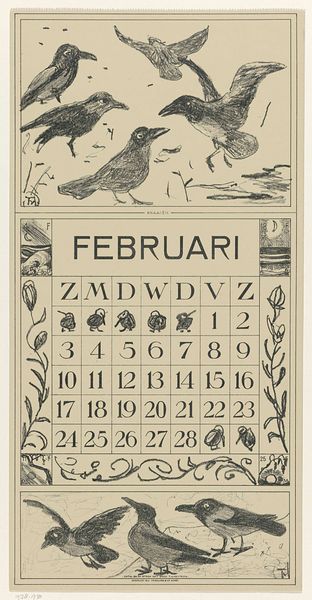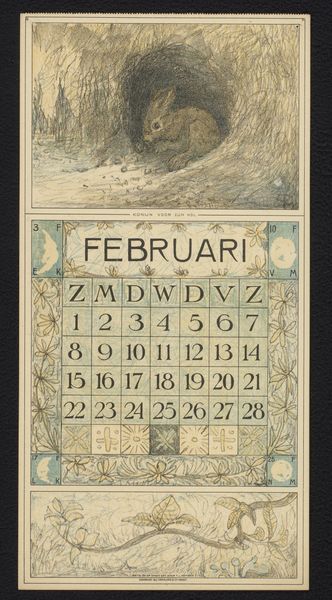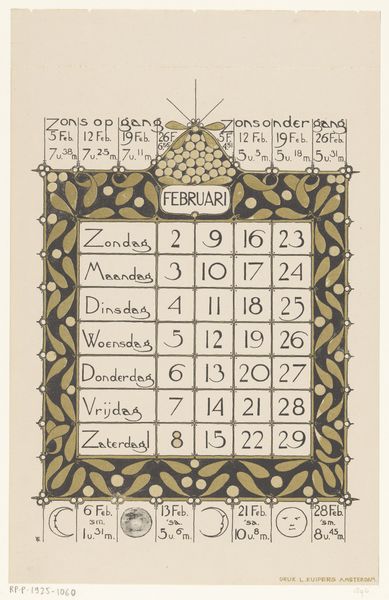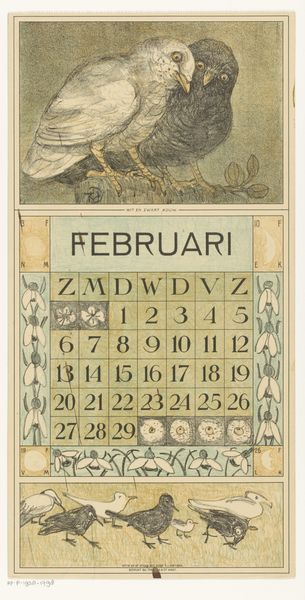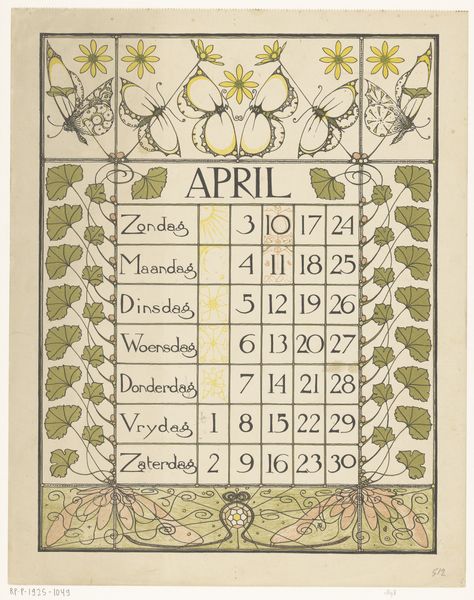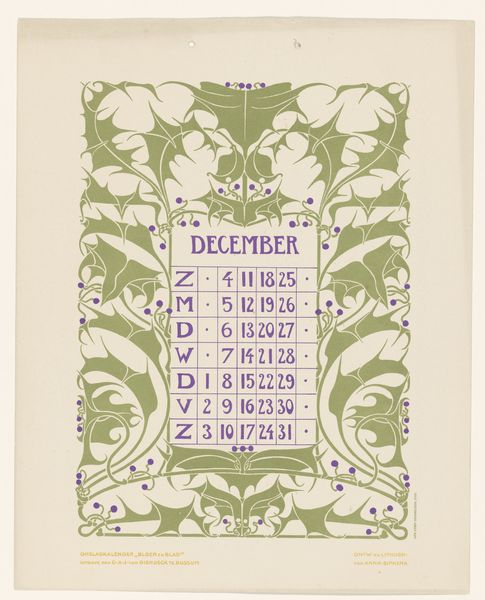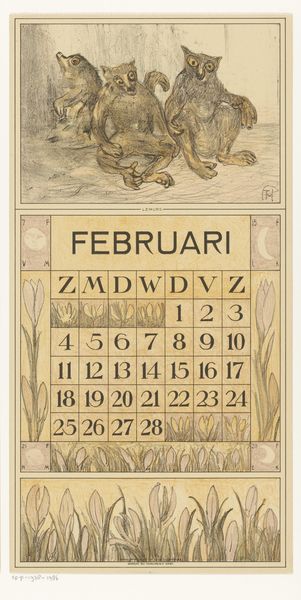
graphic-art, print, paper
#
graphic-art
#
aged paper
#
art-nouveau
# print
#
pattern
#
bird
#
paper
#
geometric
#
pattern repetition
#
decorative-art
Dimensions: height 357 mm, width 284 mm
Copyright: Rijks Museum: Open Domain
Curator: At first glance, I see the color of budding spring growth about to unfold, despite being a February calendar page. What do you think? Editor: You are looking at "Kalenderblad voor februari 1898", a print created by Theo Nieuwenhuis near the end of 1897. It's held here at the Rijksmuseum, a fine example of graphic art from that era. Curator: It's more than a simple date keeper; it is a very ornate decorative piece! The motifs seem almost medieval, these borders, and animals... I see swans, are those stoats? I'd say there’s a strong call back to illuminated manuscripts. Editor: That's a fascinating interpretation. It clearly participates in the visual vocabulary of Art Nouveau. I am seeing this print functioning within the burgeoning Dutch design reform movement, linking art with everyday life in a period of increased industrialization and urbanization. It would certainly reflect cultural pride, while drawing on national motifs. Curator: Exactly. Beyond simple national pride though, the repetitive imagery speaks to me on a deeper level. Each animal, each leaf, confined within a cell...it suggests both the beauty and the potential constraints of habit and routine, that come from cyclical time of the months and seasons, but the patterns also creates harmony within that structure, in a time when all Europe felt on the precipice of change. Editor: A brilliant point, and one often overlooked in calendar art! Let's also not neglect that as a functional calendar it served a particular need for its intended audience, reflecting rising literacy rates among the growing Dutch middle class and giving concrete aesthetic form to rising nationalism. This makes a lot of sense considering Nieuwenhuis' association with prominent political reformers and artists committed to developing distinct national idioms in the Decorative Arts, and I think he did so very successfully. Curator: I feel this image encapsulates more than just a functional need. It weaves a delicate narrative, and a visual reminder of cultural identity and how time informs everything that occurs. Editor: And there we have it! An artifact capturing the mood of its era, the practical purpose of calendrical tracking and cultural significance interwoven, quite literally, into the fabric of daily life!
Comments
No comments
Be the first to comment and join the conversation on the ultimate creative platform.

